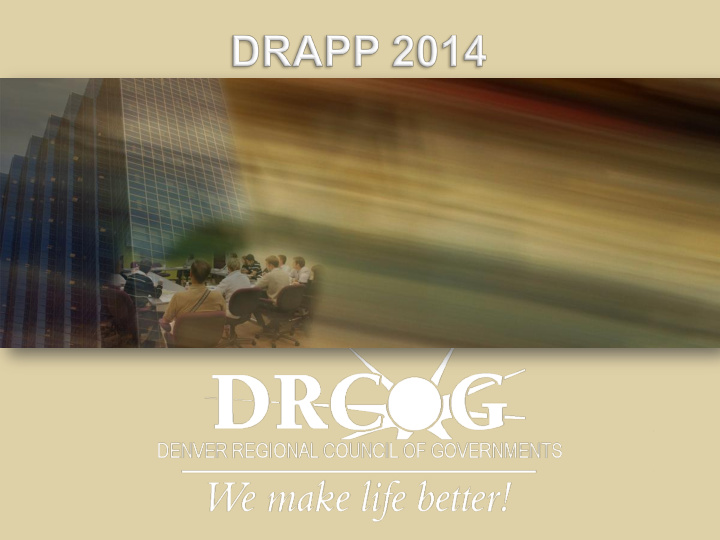



Presentation of Possible Scenarios and Costs Presentation of Ballpark Quotes for Add-ons Discussion of Quotes and Scenarios
Identical to the 2012 project in terms of deliverables. Our WMS was rolled in cost-wise in 2012 because we were a “trial” for the vendor. In 2014, it will cost us more, but we’ll also get a formal SLA etc. This scenario is a given. One tweak would be a WCS (couldn’t get a quote in time)
LIDAR is an additional product. Quotes for Bare-Earth only vs. Contours + Breaklines from two different companies Notice I didn’t include Eastern Plains. But before we go down this path…
Could be used for: Contours Identifying new development; showing moved dirt in construction projects Building heights and generalized building footprints (Note: More accurate building footprints would need to come from the imagery itself.) Vegetation/Tree Canopy mapping
Considerations: Could require different flight specs, depending on what point density we want. If LIDAR is to be used for orthorectification, the LIDAR has to be flown and processed before the imagery can be fully processed. Sanborn tells me it’s not great for “really accurate” building footprints – would be better off using photogrammetry. LIDAR can’t be collected in the snow. We may need 25 days of collection time before Feb/March. Can we do this? Note: The imagery can be processed with an existing DEM and still meet our ortho specs (just like in 2012). So, are there enough other things we’d get from LIDAR to justify its purchase?
More considerations: Point densities, accuracy, and classification level differ by application Classification: Ground vs. unclassified Ground, Vegetation, Buildings, Water etc. Hydro Enforcement/Flattening Do we want raw LAS data or derivative products?
3in is an additional product. Notice that I’ve only included 1000sqmi. But before we go down this path…
Likely a different flight height than the rest of the imagery (although this depends on the camera). How many partners does this benefit vs. how many it puts at risk?
Planimetrics features are an additional product. Definitely seems cost prohibitive, complicated, and risky.
Would we want these? What are they useful for? Would you mind demoing an oblique service and providing feedback on its utility for your agency?
Which do you prefer? New scenario suggestions? What if we want different scenarios? Can someone buy in only for scenario 1 and other people only for scenario 2? Sounds like a management nightmare. Do you want any of the add-on products so much that you’d pay more than your share to have it included?
Reasonable? Too high? Need clarification?
Always do two RFPs – Imagery and DAT Do we take WMS on as optional to an existing RFP or does it get its own? LIDAR as optional or separate RFP? Also need contingency plan? If it’s attempted but not completed in time to inform the ortho delivery, we use the existing DEM instead so the orthos aren’t late. Need to ask companies how they would mitigate risk considering these other products.
What do you think about this? Splitting the project area up into two part; have a multi-year contract to capture both parts Section one the first year Section two the second year
8 responses 50% like 2012 requirements, 50% want change Ranking: 1. Product/Deliverable 2. Cost 3. Timeline If a reliable and fast WMS is available: 63% wouldn’t order actual tiles at all. 100% would be fine with later delivery of actual tiles beyond their small area of interest.
Post-processing Re-projecting 38% willing to re-project their own data 75% willing to consider this optional Cutting Tiles 25% willing to cut their own tiles into a custom scheme 88% willing to consider this optional Convert to Other Formats 38% willing to convert data to their format of choice 88% willing to consider this optional
Hardships of changing the deliverable options Limiting to 3 projections – 25% said this is a hardship Limiting to 3 formats – 0% said this is a hardship Budgets 38% can’t go over 2012 cost 38% can double 25% can triple
I’ll continue compiling your Requirements Surveys (Due June 7). I’ll begin drafting the RFPs for Imagery, DAT, and WMS and send those out for review. Which options would you like me to include? When we get bids, you’ll get the opportunity to vote on whether we accept the options.
Dates Actions April 1 – June 7 Requirements Gathering June 7 – August 30 Prepare RFPs September 1 – November 1 Release RFPs November 4 – December 13 Vendor Selection Process December 18 Board Approval of Vendors December 19 – January 31 SOWs/Contracting January Determine cost share and start LOIs
Recommend
More recommend